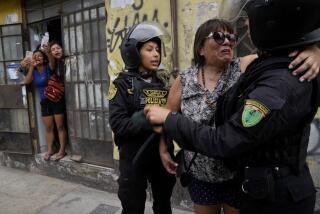100 facts for 100 years of Machu Picchu: Fact 8

- Share via
In July, Machu Picchu, Peru’s biggest tourist attraction, will mark its 100th anniversary of rediscovery. Hiram Bingham III, a Yale professor, came upon the vine-covered ruins on July 24, 1911. Here, then, as we lead up to the century mark, are 100-plus facts about Machu Picchu, its country, its history and its players. We will post one each day for the next 100 days.
8. Legend has it that Manco Capac, the son of the sun god, and Mama Ocllo, daughter of the moon, established the seat of what would become an empire at Cuzco in the 11th or 12th century.
7. Much of what we know -- or think we know -- about the Inca society is hazy and often mixes fact with myth.
6. Because the Incas had no written language system (or one that we have yet figured out), the spellings of original words vary widely. Inca, for example, may be spelled Inka, Ygna or Inga.
5. The Incas, who created incredible architecture and political systems, had no known written system of language, although some scientists suggest khipu may also have served that function.
4. The Inca used khipu (spelled “quipu” in Spanish), a series of knots that functioned as a sort of counting system.
3. About half the population of Peru is Quechua, a South American Indian group. The group’s native tongue is also called Quechua. A dialect of that language was spoken by the Incas.
2. Peru shares borders with five countries: Ecuador, Brazil, Bolivia, Chile and Colombia.
1. At 496,218 square miles, Peru, in western South America, is about the size of three Californias. California, however, has about 8 million more residents than Peru.
More to Read
Sign up for The Wild
We’ll help you find the best places to hike, bike and run, as well as the perfect silent spots for meditation and yoga.
You may occasionally receive promotional content from the Los Angeles Times.





